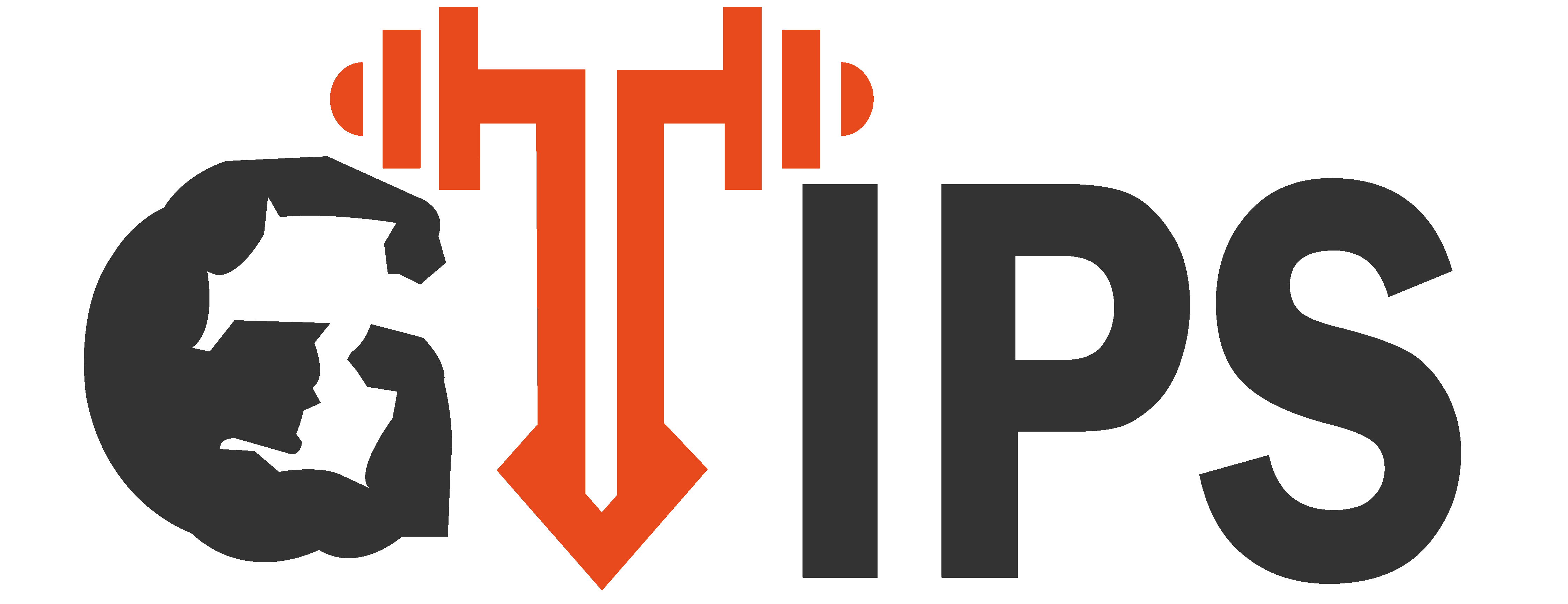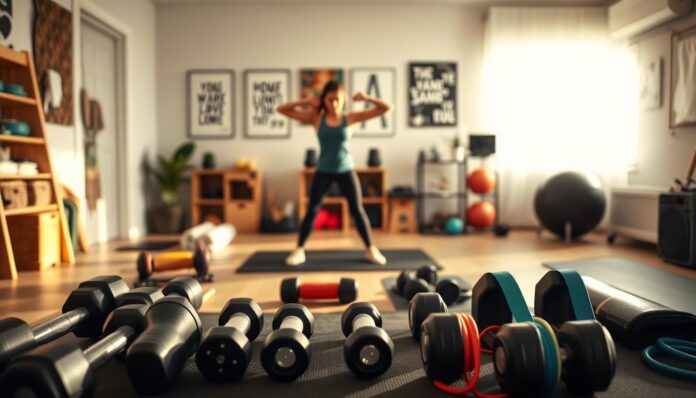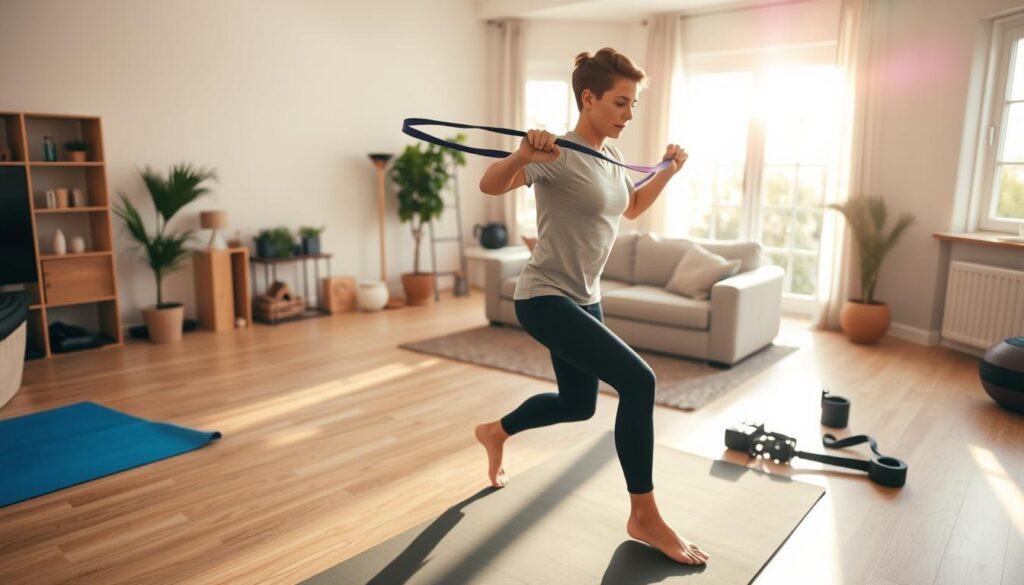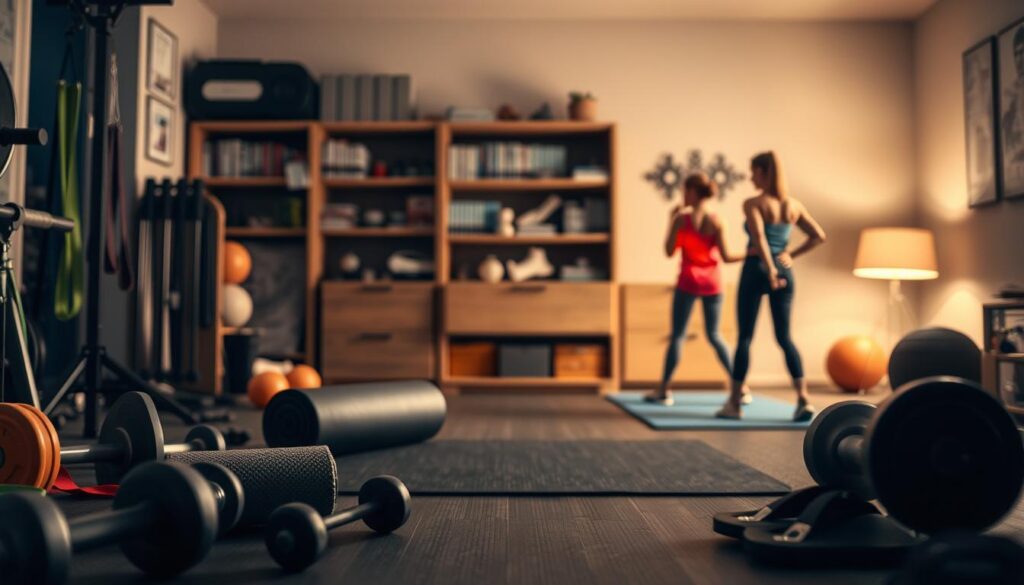Imagine turning your living room into a personal gym. The sweat and satisfaction of reaching fitness goals mix together. Many have started working out at home, finding it convenient and cost-effective. But, it’s key to know how to stay safe to avoid injuries.
Whether you’re new to home workouts or have been doing them for a while, knowing how to prevent injuries is important. It makes your workouts better and safer. Every year, many people get hurt while exercising, whether it’s a big injury or a small one.
Not taking safety steps before, during, or after working out can lead to problems. Making sure your space is safe and doing the right warm-ups are key. These steps can help you avoid injuries and make your fitness journey safer and more rewarding.
Key Takeaways
- Creating a clear workout space reduces risks of trips and falls.
- Wearing appropriate workout attire is essential for injury prevention.
- Proper warm-up and cool-down routines minimize the chances of injury.
- Monitoring your form can significantly enhance safety during exercises.
- Staying hydrated is key for performance and injury prevention.
Understanding Injury Prevention in Home Workouts
Home workouts are great for staying fit, but they can lead to injuries if you’re not careful. It’s important to prevent injuries to keep your fitness routine going strong. Knowing about different types of injuries helps make your workouts safer.
Types of Sports Injuries
Sports injuries fall into two main categories: traumatic and non-traumatic. Traumatic injuries happen suddenly, like fractures or ligament tears, often from accidents. Non-traumatic injuries come from bad training, too much work, or not enough rest. Examples include muscle strains, tendonitis, and joint pain.
Beginners might get muscle strains by pushing too hard too soon. Ligament strains often hit those who do high-intensity workouts without getting ready. Even activities like cycling can cause problems if you don’t use the right form.
Importance of Injury Prevention
Putting injury prevention first makes your workouts better and cuts down on recovery time. Using safety tips like warm-ups and cool-downs can prevent overuse injuries, which are common. Mixing up your workouts helps avoid muscle imbalances and boosts strength.
Rest days are key, as they can help you get stronger by up to 30%. Drinking enough water is also important for keeping your joints and body working right during exercise. Paying attention to your body helps you know when to stop and avoid long-term injuries.
Working out with a partner or recording yourself can help you improve. About 70% of newbies feel lost with workout techniques, showing the need for expert advice. With the right knowledge and precautions, you can safely enjoy your home workouts.
Common Causes of Exercise Injuries
Knowing why exercise injuries happen helps you stay safe at home. It’s important to avoid overtraining, use the right technique, and balance your muscles. These steps can prevent pain and keep you moving forward.
Overtraining and Its Risks
Overtraining happens when you don’t give your body enough rest. It can cause muscle strain and fatigue. Make sure to take 1 to 2 rest days a week to heal and recover.
Slowly increase how hard and long your workouts are. This helps avoid overtraining and keeps your exercise routine healthy.
Poor Technique and Its Consequences
Bad technique can lead to injuries. It might hurt your knees or back. Learning the right posture for each exercise is key.
Good technique not only prevents injuries but also makes your workouts more effective.
Neglecting Muscle Balance
Ignoring muscle balance can make you more prone to injury. When some muscles are stronger than others, it can cause strain. It’s important to work all major muscle groups.
This approach helps you stay strong and stable, reducing injury risks.
Home Workout Safety Tips
Starting with warm-up routines and cool down strategies is key for home workouts. They get your body ready for exercise and help it recover afterwards. Adding these steps to your routine can lower injury risks and make workouts more effective.
Warm-Up Routines
A good warm-up gets your muscles and joints ready for exercise. Start with 5 to 10 minutes of dynamic stretching. This boosts heart and blood flow, helping prevent injuries.
Choose stretches that match your workout, like leg swings for running. Hold each stretch for 10 to 20 seconds. This prepares your body and reduces muscle strain. Also, replace your workout shoes every 300 to 500 miles or 6 to 8 months for the best support.
Cool Down Strategies
Cool down for at least 10 minutes after your workout. This should be twice as long as your warm-up. Use static stretches for the muscles you used during your workout.
Drinking 1 pint of water right after cooling down helps replace lost fluids. These strategies help your muscles recover and reduce soreness and fatigue. For more tips on safe home workouts, check out home workout safety tips.
Choosing the Right Equipment
It’s key to pick the right gear for a great home workout. Good fitness equipment boosts your performance and keeps you safe. Before starting, check if your gear is durable and works well. This helps avoid injuries.
Spending time to check your equipment’s condition is important. It helps make your workouts safe and effective.
Assessing Your Gear
Start your home fitness journey by checking your gear. Look at these points:
- Check for wear and tear on equipment to ensure it remains safe to use.
- Inspect for any design flaws that might lead to accidents.
- Ensure that all parts are functional and well-maintained.
Doing these checks can lower the risks of using exercise equipment. Quality gear might cost more upfront. But it’s better in the long run, as it lasts longer than cheaper options.
Ensuring Proper Fit and Functionality
Choosing the right equipment means paying attention to fit. Here are some key things to remember:
- Select appropriate footwear for your workout type. The wrong shoes can cause injuries during aerobic exercises.
- For machines like exercise bikes and ellipticals, adjust settings to fit your body dimensions correctly.
- Before starting, learn how each item works to use it correctly.
Adjusting your fitness gear to fit your body improves comfort and safety. A well-fitted workout space boosts performance and safety. Make sure to choose the right equipment for safe and effective home workouts.
Proper Form and Technique
Keeping the right form and technique in your home workouts is key. It helps you reach your fitness goals and keeps you safe from injuries. Good posture means better performance and less chance of getting hurt.
The Importance of Correct Posture
Good posture is the base of effective workout technique. It protects your joints and muscles from harm. This way, you work out better and avoid injuries that often happen at home.
Bodyweight exercises need you to keep your posture right. Always check how you’re standing or sitting. Warming up is also important to get your body ready for exercise.
Tips for Monitoring Your Form
Watching your form while working out makes your home workouts better. Use mirrors or record yourself to see how you’re doing. Having a workout buddy can also help you stay on track and make changes when needed.
Spending time on checking your workout technique is worth it. It lowers the risk of accidents caused by bad form. Always put safety first—keep your hair tied back, wear the right shoes, and clear your space to avoid falls.
Creating a Safe Workout Environment
Creating a safe workout space at home is key for your health and fitness. An organized area helps you train better and lowers injury risks. With more people working out at home, it’s vital to make your space safe and supportive.
Clearing Your Space
Start by removing any obstacles that could trip you up or distract you. A clean area lets you concentrate on your exercises and cuts down on accidents. Keep at least 3 feet between gym machines to avoid collisions.
Regularly clean and maintain your equipment. This helps prevent accidents caused by wear and tear.
Lighting and Surface Considerations
Good lighting is essential for a safe workout space. Poor lighting can cause slips and falls, leading to injuries. Make sure your area is well-lit so you can see what’s around you.
For flooring, choose softer surfaces like interlocking tiles or mats. They can reduce impact by up to 25%, protecting your joints. The right flooring makes your workouts more comfortable and safe, helping you perform better.
Hydration and Nutrition for Safe Workouts
Hydration and nutrition are key for safe workouts and better performance. Your body needs enough fluids and nutrients during physical activity. This keeps your energy up and helps prevent injuries.
Knowing how to stay hydrated and nourished is important. It can greatly improve your exercise experience.
The Role of Hydration
When you exercise, you can lose a lot of water. This is true for long runs or hard bike rides. Dehydration can make you tired, cause muscle cramps, and even confuse you.
To stay hydrated, drink 6 to 12 ounces of water every 20 minutes while working out. Before you start, drink 24 ounces of water with electrolytes. This gets your body ready for exercise.
Nutrition to Prevent Injury
Eating right gives your body the energy and nutrients it needs. For long workouts, eat a meal with lots of carbs and little fat before you start. After, eat a meal with carbs, proteins, and fats within 2-3 hours.
This helps replace lost energy and helps your muscles recover. It also prevents injuries from being too tired. Eating well keeps you healthy and helps you do your best.
Listening to Your Body
Understanding how your body talks is key for a good fitness journey. It’s not just about doing workouts; it’s about knowing when to stop. Paying attention to your body can lower injury risks and boost your performance.
Recognizing Pain vs. Discomfort
It’s important to tell the difference between hard workout discomfort and real pain. Discomfort happens when you push yourself hard. But pain means something might be wrong.
If you feel sharp or ongoing pain, it’s a warning. Watching how your body reacts helps you know when to rest or change your routine. Signs like big changes in how you feel or getting really tired mean you might need to ease up. Checking in with yourself regularly helps you handle injuries better.
What to Do When You Feel Pain
Feeling pain doesn’t mean you should freak out. It’s a chance to take care of yourself. First, stop what you’re doing to see how bad it is.
Using the RICE method—Rest, Ice, Compression, Elevation—can help with quick injuries. But if the pain doesn’t go away or gets worse, get help from a pro. Adding these steps to your routine can prevent long-term problems. Remember, keeping your body safe is more important than just exercising.
For more tips on making your home workouts better, check out this guide. It focuses on safe and effective exercises.
Conclusion
Home workouts can boost your fitness journey if you focus on safety. By following key safety tips, you make your home gym safe. This lets you work towards your health goals without risks.
Choosing the right equipment and having good warm-up and cool-down routines are important. Every step you take helps keep your workouts safe.
Keeping the right form during workouts is critical. Using proper technique, like doing beginner exercises or lifting with spotters, helps avoid injuries. It also builds your confidence, letting you challenge yourself more.
A well-planned home gym offers the convenience and privacy you need for regular workouts. Start with basic gear and add more as you get stronger. For tips on setting up your home gym, check out home workout equipment suggestions online. By following these tips, you can stay active and reduce injury risks.
FAQ
What are the primary types of sports injuries that can occur during home workouts?
There are two main types of sports injuries. Traumatic injuries happen suddenly. Non-traumatic injuries come from training errors and overuse.
How can I prevent injuries during home workouts?
To avoid injuries, focus on gradual training and enough rest. Also, keep your workouts varied. Using good strategies before, during, and after is key.
What are some common causes of exercise injuries at home?
Overtraining without rest, bad technique, and muscle imbalances are common causes. These often come from focusing too much on certain muscles.
How important is a warm-up routine before exercising at home?
A good warm-up is very important. It improves blood flow and flexibility, lowering injury risk. Tailored dynamic stretches are very effective.
Why is cooldown important after a workout?
A cooldown with static stretches helps muscles recover and stay flexible. This reduces injury risk from too much strain.
What should I consider when choosing exercise equipment for home workouts?
Check your equipment for durability and fit. Make sure it matches your workouts. Also, ensure shoes fit well and treadmills are safe.
How can I maintain proper form and technique while exercising at home?
Keeping proper form means being aware of your posture. Use mirrors or record yourself. Or, ask a workout partner for feedback.
What steps can I take to create a safe workout environment at home?
Clear your space of obstacles and ensure good lighting. Choose a safe surface, like mats or carpets, to protect your joints.
How does hydration impact workout safety?
Staying hydrated is key for fluid balance and joint lubrication. It boosts performance and lowers injury risk from fatigue.
What types of food should I consume to support safe workouts?
Eat a balanced diet with vitamins and minerals. This keeps energy up and supports recovery, reducing injury risk from fatigue.
How can I recognize the difference between normal discomfort and pain during exercise?
Listen to your body. Normal discomfort is a muscle response. But, pain, like in joints, means stop and check the injury.
What should I do if I experience pain while working out?
If you feel pain, stop and check the injury. Rest, use ice, and seek help if needed for proper recovery.






